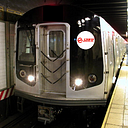For a better LRT
Now that new trains are in service, we’re finally seeing progress.
There’s still a way to go. After all, there remain 17 more new vehicles to be introduced — not counting the first two, which were sent back for modifications. All will be delivered by end-2025, claims the LTA. And the upgrading of the 9 remaining second-generation vehicles will finish by the end of 2026. It is expected that “half the fleet” will be on the new CBTC system by the middle of 2025; I suppose that refers to the entire 32-strong fleet.
Progress has also been made with the restoration of dual-loop service at mealtimes on weekends. I suppose more can be done, but other things may need to happen first.
Stay the course
First things first, they probably should at least try to finish the goals of the renewal project.
More robust power rail designs and modern control systems may help, as speed restrictions to manage wear and tear on the old rails are no longer necessary, train speeds are no longer tied to track circuit boundaries, and operational workarounds aren’t needed any more to mitigate vehicle control system faults. New trains with improved electrical systems also have more efficient propulsion packages, allowing for faster speeds. Regenerative braking will also improve efficiency, using lesser capacity of the power supply system — at least 30% savings according to Denver.
We may also already be seeing more comfortable rides. The automatic driving system of older and unupgraded cars seems to be more primitive, where the system only commands full power or full braking force. Whilst I’ve not yet had the chance to ride the new cars, from my experience on the upgraded cars with the new control system, a more gradual driving profile is mostly achieved, where full power or full brake isn’t used from the outset.
As an aside, the rehabilitation of the KLIA Aerotrain is planned to take a year, after Alstom took over as project lead from its local partner Pestech with a new contract. There is already prior work done, and they’ve even managed to reap so much time savings, they pushed forward the project timeline by two months. Then again, the Aerotrain has been fully closed since March 2023, and with it being the only connection to KLIA’s Satellite Terminal, restoring service is a priority for the Loke ministry; and unlike us, they have full access to work around the clock.
Only time will tell whether the LTA can do the same. Some weekend late openings may be permissible in order for lifting operations to be more productive, reducing the time needed to bring up new vehicles and bring down old ones, speeding up the commissioning process. Or to speed up the power rail replacement when that eventually begins come 2026, when all vehicles are running on CBTC and the old train control system can then be taken out of service.
Single and ready to mingle
Finishing the renewal project is the first step to speed up the system. Apart from removing operational limitations to manage wear and tear, the LTA and SMRT can also explore some speed limit increases. Faster trains complete a loop quicker, which also allows lesser trains to be used for a given service level. The opposite is also true, where you can run more service with the same amount of trains.
Alstom could be asked to help explore the feasibility of increasing speeds (edit: including vehicle stability improvements, if any, built into the 300R design). But to do so, we might need to replace the C801A trains which are still built on a platform dating from the 1970s. Denver is running a mix of old and new vehicles, but they have a much larger fleet. Or they could opt to replace even the C801A vehicles, with Alstom asked to help find replacement users. Cityflo 650 CBTC-fitted vehicles are also used in San Francisco, amongst other cities and airports. Our vehicles can be offered to them wholesale, or even stripped for parts to keep those systems running.
There’s some precedent in this. When Toronto’s Scarborough RT was shut down, the vehicles were in decent condition. The city of Detroit, Michigan, will thus purchase Toronto’s old vehicles as replacements for theirs — while similarly aged, Detroit’s vehicles are in worse condition than Toronto’s. With our reputation for high standards, there shouldn’t be a hard time finding buyers for ex-Singapore trainsets.
As I’ve mentioned previously, standardizing the entire fleet on the 300R platform will significantly help the operations and maintenance ecosystem. Whilst there may be design similarities between the CX-100 and the APM 100, the 300R is a totally different beast, with an “inbuilt system control management system (sic)”, and AC motors instead of DC ones. This will thus require two different streams of knowledge and parts.
Improving train availability with a single fleet should also help enable more service, as there may no longer be challenges of having stray single vehicles around, that can’t be paired up with the other class of vehicle. Of course, lone cars may not affect service that much, if the new train control system is capable of running 1-car trains, and SMRT is willing to run a short train. But so far, they do not, preferring a full 2-car service even if it means longer waiting times.
Load shedding
Now we go into the really fantastical.
My next proposal would be to close and move LRT stations. Closing Senja station is low hanging fruit, as much of Senja LRT’s catchment area already overlaps the MRT — all the more so with Exit C of the MRT station serving the HDB precinct directly opposite the LRT station. Closing the station without replacement allows trains to bypass the area and have a clear run from Jelapang to Bukit Panjang Station. Edit: as for those going further afield, they can use a new Bukit Panjang station, which takes me to the next point.
The second would be to consolidate the existing Phoenix and Bukit Panjang stations into a new location roughly between both stations — at a straight and flat section of track located above Exit B of the MRT station. This has several benefits that may be worth the work. New platforms with wider queueing areas, perhaps also with PSDs and escalators, can be built, an improvement over the narrow platforms of the current station.
Building directly above Exit B of the MRT also significantly reduces walking time from MRT to LRT, and will also reduce congestion at Exit A, which all LRT and bus interchanging passengers currently have to use. Exit B can be made part of the paid-area connection, like Caldecott station’s TEL-CCL connection. LRT passengers would then use Exit B, leaving Exit A solely for exiting, and passengers going to the interchange or the dedicated stop for service 983. And of course, there are the speed benefits — clear runs from Teck Whye and Petir to the new station location.
For what it’s worth, it appears that the MRT station isn’t really that useful as a pedestrian underpass anyway. SBST barricades the exits after the last DTL train, and at the Choa Chu Kang Road junction, under the flyover, there are also signalized pedestrian crossings to cross Upper Bukit Timah Road. But if one insists, perhaps a high level bridge linking with the existing Hillion Mall connection could be built. And bus transfers provided at Phoenix station are still available near Bukit Panjang station.
This also mitigates the impact of closing Senja station for those around it that need the LRT, as it’s not that much incrementally further for them to walk through the MRT station to access the new LRT platforms, or major bus stops along Bukit Panjang Road, and the Jelapang option is still available. Similarly, while a case can also be made for closing Petir station, the two road junctions between Petir and Bukit Panjang stations may justify keeping the station open, especially if Bukit Panjang station moves to a more convenient location for MRT transfers.
This is not without precedent. Sengkang and Punggol stations are typically about 800m to 1km from the first stations on their LRT loops — double the regular distance between LRT stops. The lone exception, Sam Kee, may be excused as it serves One Punggol and Punggol SAFRA, and thus can be considered an extension of Punggol town centre proper. People aren’t so willing to ride the LRT for one stop if they’re close enough to MRT stations, and the BPLRT should adapt to this new reality. By closing and merging stations, travel times can be sped up, and round trip times can be reduced.
The last, and most unlikely, proposal could be to extend the LRT to the current Gali Batu MRT depot, via Limbang, Yew Tee, and a new DTL2e station nearby. A new depot built over the DTL one could relieve space constraints at Ten Mile Junction depot, permit the operation of 2-car joined trains, and LRT stations in Yew Tee can potentially also help relieve traffic in that area too. But this may not be necessary.
The magic number is 28
Hopefully, these can help push overall round trip times to 28 minutes or below. 29–30 minutes was possible back in the old days before all the speed restrictions and extended station dwell times, after all, so going back to that by keeping speed restrictions and dwell times to a minimum would just be the status quo ante; faster trains and closing stops should give us more headroom for travel time savings.
Why 28 minutes? With 14 pairs running and 2 pairs left in the depot, this would allow a 2 minute service to be run between Choa Chu Kang and Bukit Panjang. Improving speeds will be the first step in proving the point of the LRT systems we already have. If purchasing 13 new vehicles to standardize the entire fleet on an improved platform, can reduce LRT travel times, then it’s a cost worth spending. If they can shorten travel times even more, even better. Capacity will then come when the same fleet can be used to run more service, making the most of CBTC.
The second point will be to drive home the reinvention of the LRT. The nature of local politics means that residents may be more amenable to using rail services if it can be demonstrated that the system is way past its worst days. At least local MPs were brought on board the new vehicles, even if I remain unconvinced that they use it daily.
Most importantly, they need to start emphasising the point that we’re not Toronto. We’re fixing the system and making it a better one. Faster and more frequent public transport that doesn’t get stuck in traffic is the selling point of automated systems, so let’s make sure we can put that fact to good use, by running fast and frequent service. Reviews of the new vehicles already seem positive, so let’s build on that.
And as I’ve also mentioned before, that’s a lesson other lines should very well learn too — especially since SMRT has also promised this once the Circle Line upgrading and expansion projects are completed.
Like what you read? Join the Telegram Channel for updates, or follow on Instagram for quick takes!

